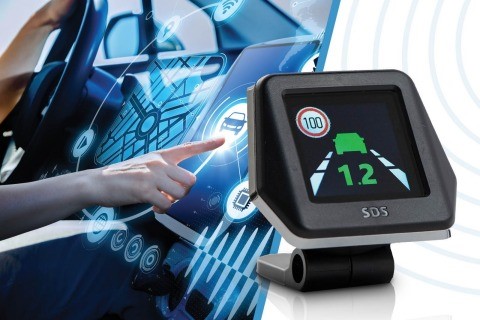Leading Expert on Advanced Driver Assistance Claims No Difference Between Active and Passive Solutions

Commends SDS for Combining Radar with Cameras to Maximize Performance
Walter Hagleinter, an adviser on transportation to governments around the globe and an the world’s leading expert on advanced driver assistance and safety (ADAS) systems, claims in a market report he prepared for Safe Drive Systems that there are no substantial differences between active and passive vehicular safety systems and that it is far from certain that the market is ready for the former.
“At this point in time, many countries are just not yet ready for active safety systems on the roads,” Hagleinter says. “In another five years or so it will be obligatory to install active systems in vehicles in Europe, but the required parameters have not yet been addressed by manufacturers, so there’s no reason to rush and push ahead before the market is absolutely ready for it.”
Active systems automatically apply the brakes when a danger is identified. Passive systems, in contrast, only warn drivers when they sense an impending danger. This early warning affords drivers time to react and avoid a collision on their own. Therefore, they assist and educate drivers how to drive correctly and cautiously on the roads.
The latest generation of active systems, which are installed in vehicles by car manufacturers, automatically apply the brakes when an accident occurs. But their reaction time is shorter, since they are activated the moment before the collision. In comparison, passive systems provide a longer reaction time, which allows drivers to prepare themselves accordingly.
Moreover, in the event of a “false positive,” an active system will still apply the brakes, raising the risk of an accident. A passive system will not do that. “For all these reasons, passive systems provide a significant added value,” Hagleitner argues. “Replacing an existing passive system for one an active one will not necessarily yield an additional decrease in the percentage of accidents.”
Hagleinter, who founded ADAS Management Consulting, has more than 40 years’ experience in the transportation sector. He states that since ADAS and navigation control systems were first introduced about 20 years ago, the data has shown that they have successfully proven their effectiveness, they clearly have made roads safer, more functional and more comfortable, and have significantly reduced the number of accidents.
Hagleinter notes that while Mobileye is one of the market’s performance pioneers in existing passive systems, its solution is based solely on cameras. In contrast, Safe Drive Systems (SDS) is the only company that offers a system combining radar technology with cameras, which maximizes effective performance even at night and under adverse weather conditions. All these systems can be installed both in brand new vehicles and “aftermarket” automobiles.
“Considering all the parameters of system layout and influences over driver behavior leads to the conclusion that passive systems are even more beneficial than active ones,” Hagleitner concludes. “And they also lead to better drivers and driving.”
Category: Connected Fleet News, Featured, Fleet Tracking, General Update, News, Safety










